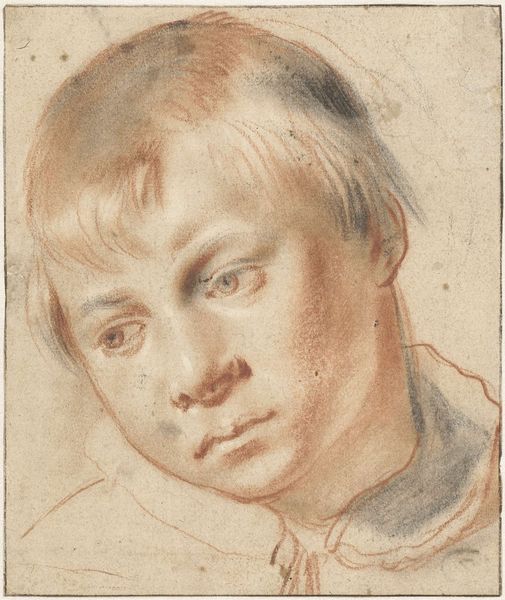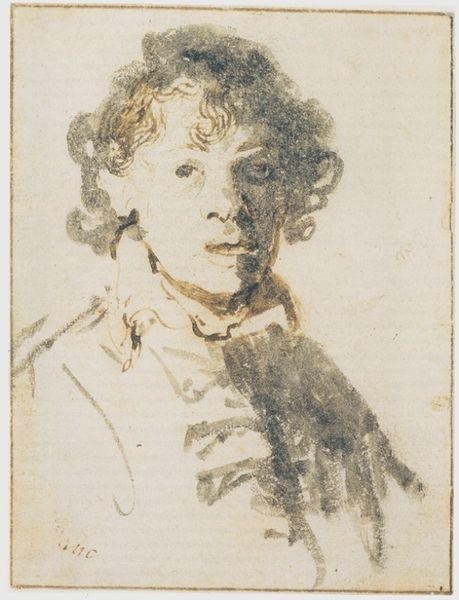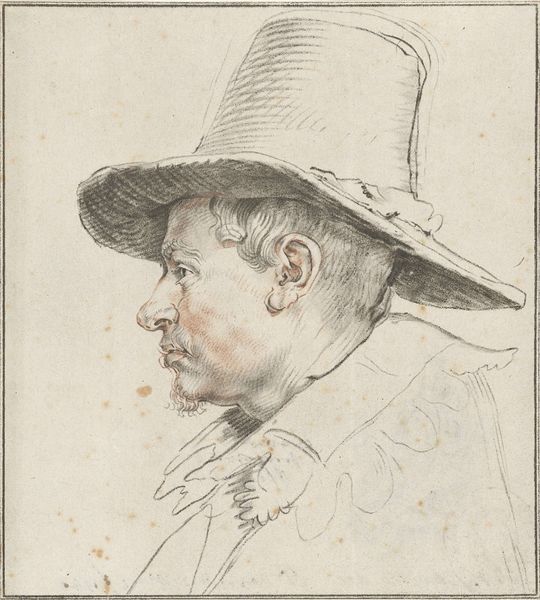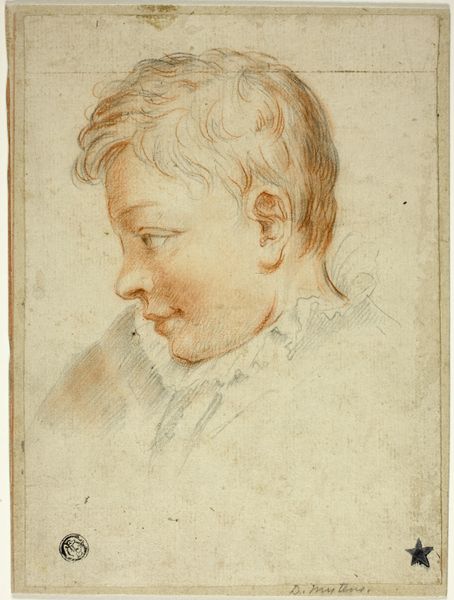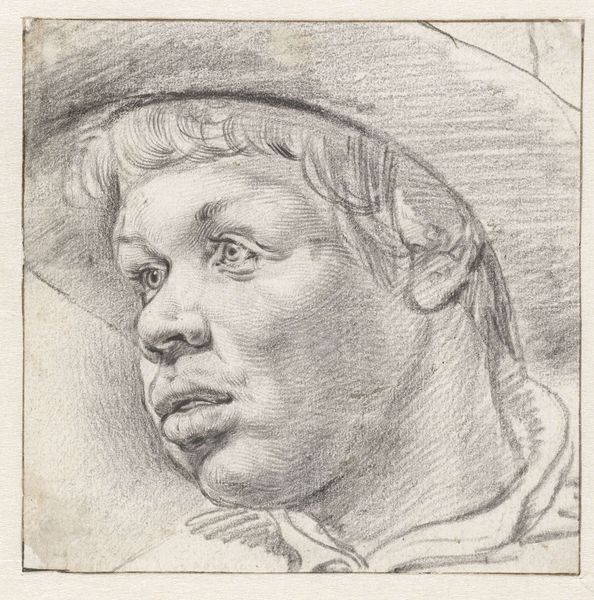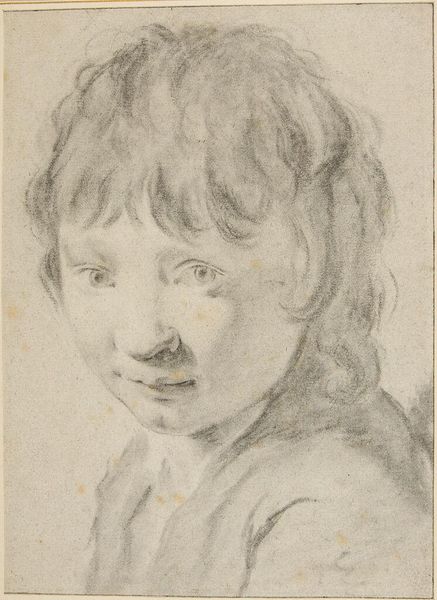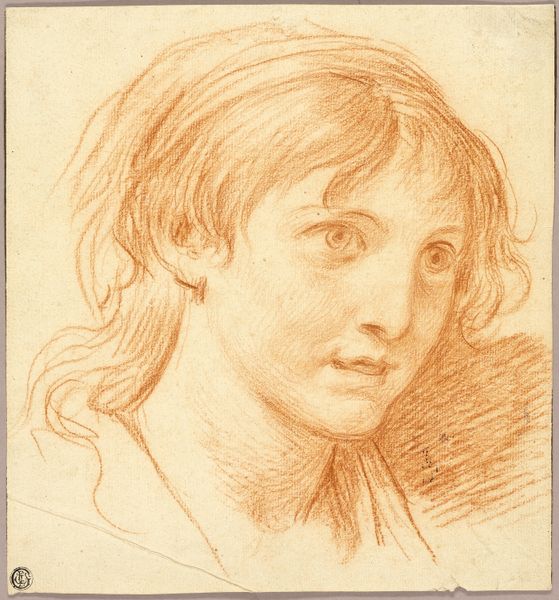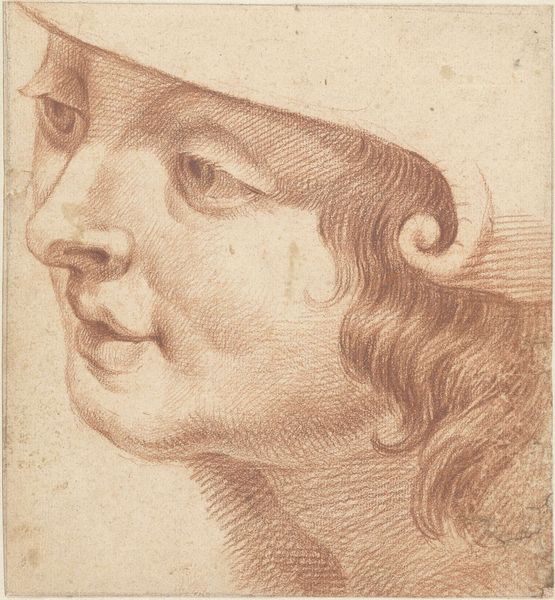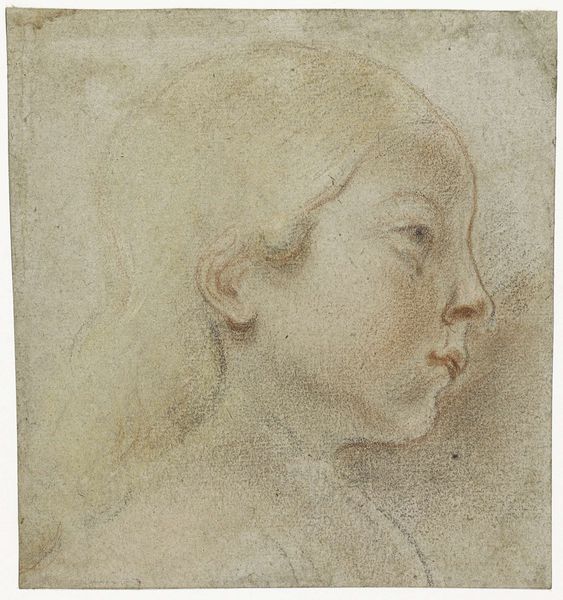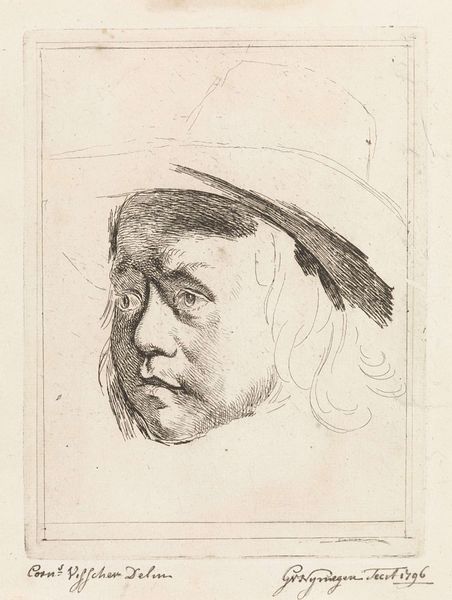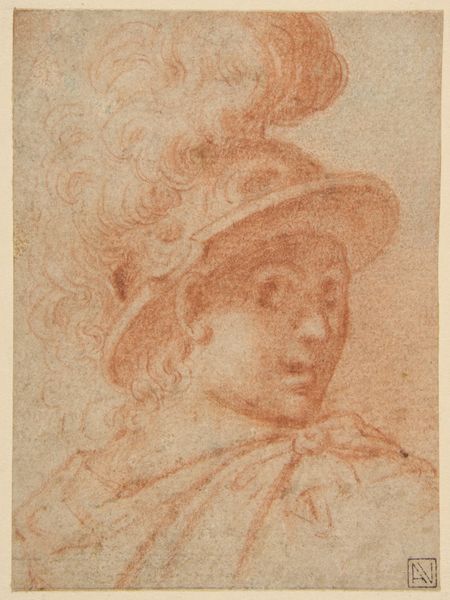
drawing, red-chalk, chalk
#
portrait
#
drawing
#
red-chalk
#
charcoal drawing
#
pencil drawing
#
13_16th-century
#
chalk
#
italian-renaissance
Copyright: Public Domain
Editor: Here we have Cristofano Allori’s "A boy wearing a workman's hat," a red-chalk drawing from around 1600. It's a striking portrait, even in its unfinished state. What strikes me is the direct gaze, almost confrontational. What do you make of it? Curator: Well, considering the social and cultural history of the time, such directness is interesting. Portraits then were often about conveying status or ideal beauty. A workman’s hat suggests a lower social class, making the focused, unwavering gaze subversive. Was Allori perhaps questioning the existing social order through the very act of portraying someone unexpected and having him look so directly at the viewer? Editor: That’s a great point. I hadn't thought about the act of choosing *who* to portray. Does the medium, red chalk, play into that at all? Curator: Absolutely. Red chalk allowed for nuanced shading, making the figure lifelike and imbuing the subject with an inner life. Was Allori elevating the working class by rendering this boy with such care and attention? Who, after all, dictates which images endure, and in which locations they find their audiences? It seems a purposeful choice. Editor: So, it becomes a political statement simply through representation and technique. It is fascinating how seemingly straightforward imagery can carry such complex meaning. Curator: Exactly! And analyzing art from this period helps us question who had a voice, whose image mattered, and what societal power structures were at play. Editor: This really makes me rethink the power of portraiture and the statement that choices of subject and presentation make. Curator: Indeed. The social context often frames not only the art, but its continuing presence and influence in public collections like the Städel Museum.
Comments
stadelmuseum about 2 years ago
⋮
Thanks to a donation from the Gabriele Busch-Hauck Foundation to mark the ninetieth birthday of the benefactress, the Städel Museum's stock of Italian Baroque drawings in its Collection of Prints and Drawings was enriched by a red-chalk drawing by the Florentine painter and graphic artist Cristoforo (also: Cristofano) Allori. Created in around 1600, the study of a boy wearing a peaked cap turned sideways is a powerful example of the change in style taking place at the time from Mannerism to Early Baroque.Another red-chalk drawing by Allori showing the same boy's head and peaked cap is held by an American private collection. It is clearly a repetition of the new Frankfurt acquisition in which the artist increased the realism by working out the textures and volumes more precisely, and by adding a more open gaze, while also making the face more harmonious and hence more attractive. The drawing at the Städel Museum is probably the original study, drawn directly from a live model. It is characterised by a similar inner contradiction, albeit expressed in a different way. On the one hand, the irregular facial features reveal the artist's wish to record reality accurately, while on the other, the two-dimensionality of the representation, the smoothness of the surface and the relatively distant gaze are indebted to Florentine Mannerism.
Join the conversation
Join millions of artists and users on Artera today and experience the ultimate creative platform.
